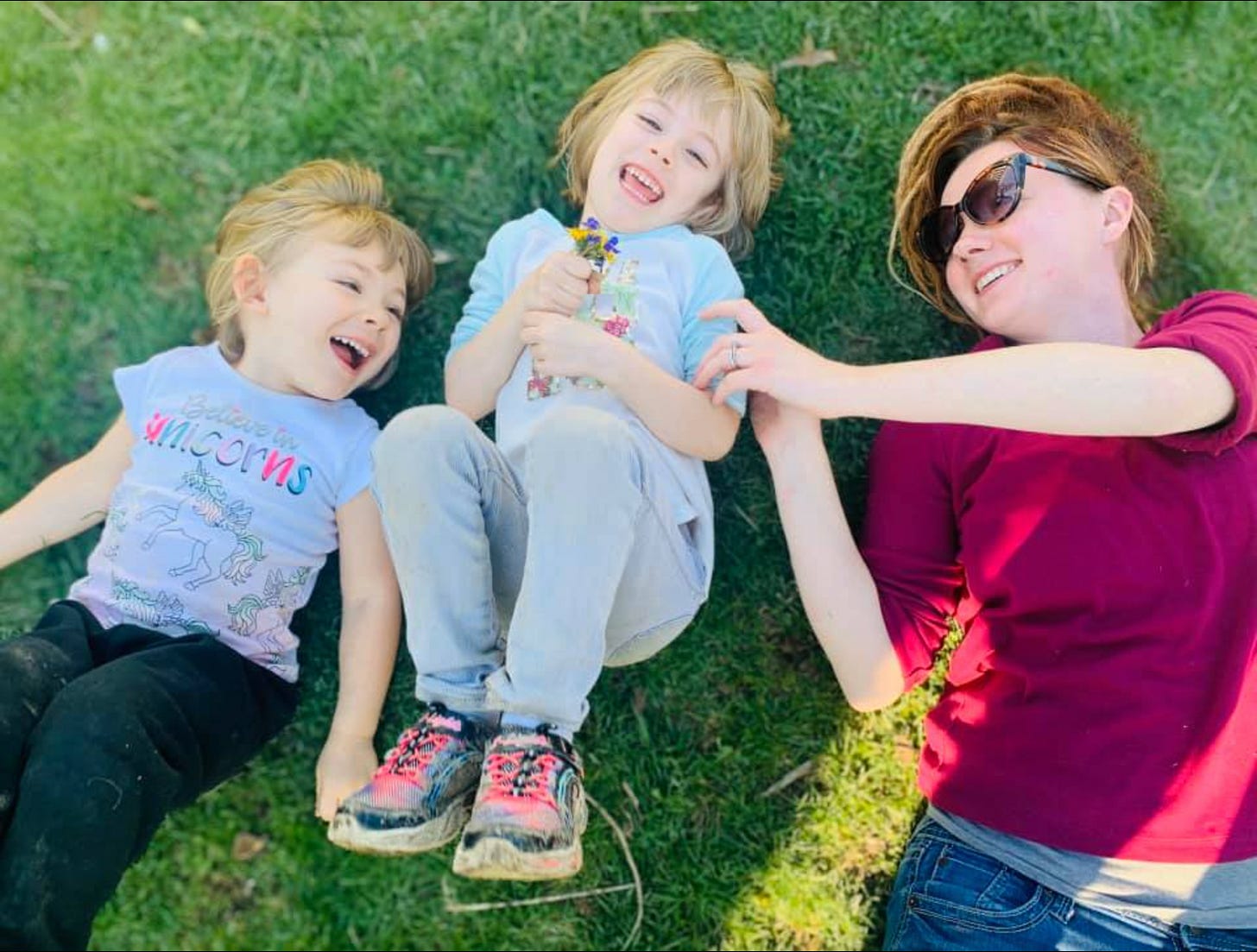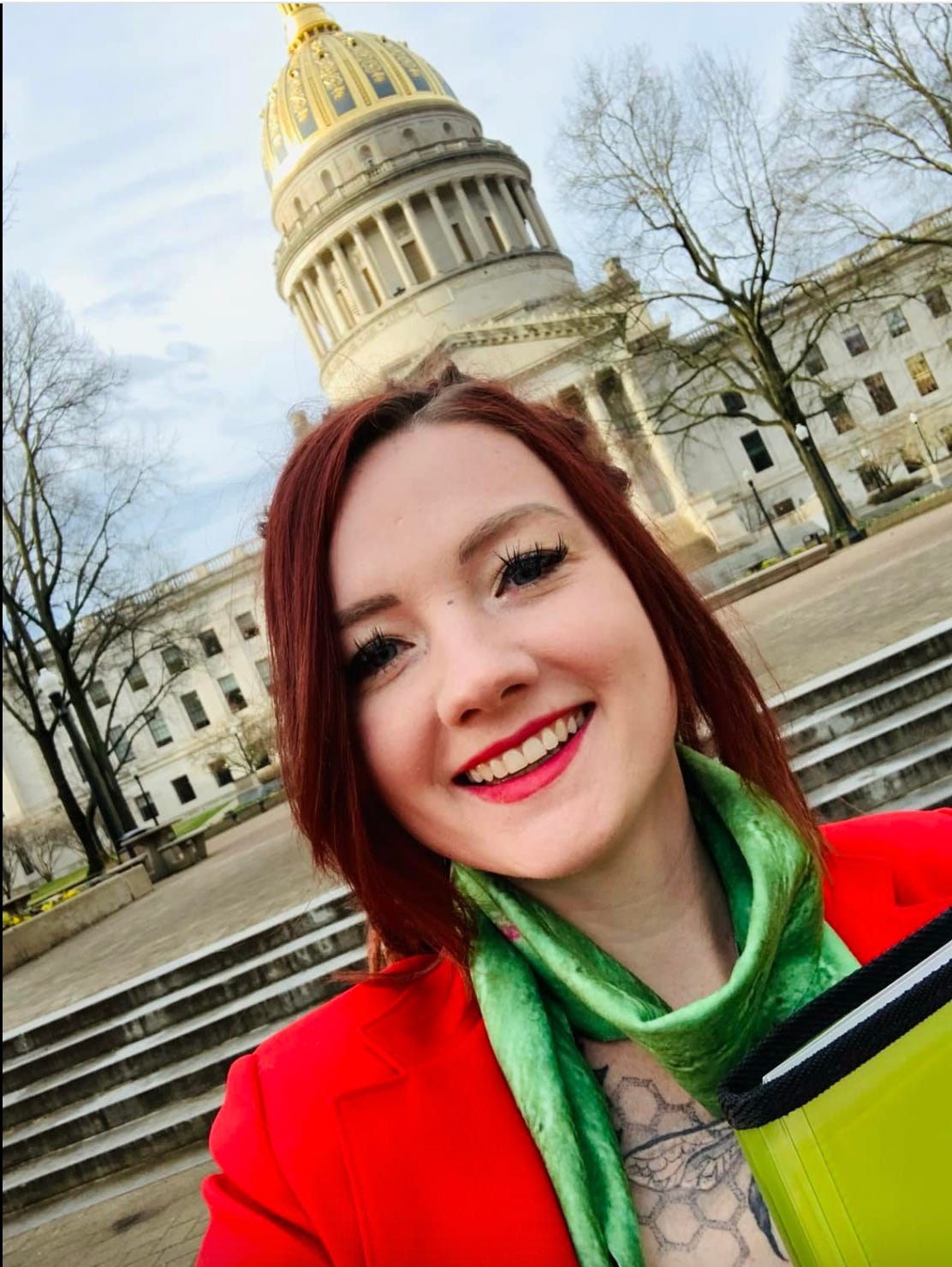What Happens to Child Care When Funds Run Dry
Alternate title: a Tale of Two Gales (and no, we aren't related)
Miss Tiffany's Early Childhood Education House, run by Tiffany Gale, whose child care center is facing a major loss with the end of federal funding. Photo courtesy of Tiffany Gale.
Here is what you need to know about Tiffany Gale*:
She loves working in child care.
She is leaving her job in child care.
Why would a provider like Tiffany Gale walk away from running the day-to-day operations of the two child care centers she runs and loves?
Because when government funds run out, child care providers are left to prop the industry up on their own.
It’s not fair to them, it’s not right for the families who depend on child care to go to work, and it’s wrong for our kids, who thrive in high quality care.
Cute kiddos at Miss Tiffany’s, near the garden beds she purchased with the extra funds. Photo courtesy of Tiffany Gale.
But first, where did all this money come from?
Because of decisive government action during the emergency phase of the pandemic, a lot of money went to child care centers like Miss Tiffany’s in Weirton, West Virginia so they could stay open, pay staff, and watch children which allowed the parents in their community to go to work. For a period of time in West Virginia, essential workers were given free child care subsidies, something that allowed them to pay for child care they might otherwise be unable to afford. Most of these funds were through the American Rescue Plan Act, which has been nicknamed “ARPA funds” by those of us fluent in DC acronym shorthand.
Across the country, ARPA stabilization dollars went to more than 220,000 child care programs, affecting 9.6 million children, with many child care providers echoing the same sentiment that Tiffany did - these funds kept their doors open at a time when financially they could not break even.
But the funds ran out in September 2023. Since then, thousands more child care providers have had to change the way they operate.
For Tiffany, her primary source of revenue is the tuition paid by families. She charges $45 per day or $165 per week per child. Demand is high; she has a waiting list “a mile long” but can’t raise her rates because most of the families she serves can’t afford to pay more. So when federal funding became available, she could do more things.
Here are a list of a few of them:
She was was able to hire additional staff AND pay them more.
She could buy fresh food like chicken, broccoli, eggs and apples to serve the kids for breakfast and lunch instead of dry cereal, hot dogs, canned meat, and canned fruits and veggies.
She bought play structures for their outside space.
She bought nap mats and bedding for kids to sleep on, instead of the ones they were using before, held together with duct tape.
She brought in a floating staff member to cover if another teacher called out sick.
She purchased raised beds to create a garden, so her kids could learn about sunflowers and how they grow.
Each of these items cost money, yet not one would be considered a luxury. We know kids need quality nutrition, we know they need outside time and an appropriate amount of staff.
Tiffany Gale and kids at Miss Tiffany’s. Photo courtesy of Tiffany Gale.
“We don’t have the child care to support this”
Weirton, West Virginia has a population just under 20,000 people and an average household income over $50,000. Most of the families Tiffany serves work in the area: in factories, health care, construction, in retail, as home health aides, or teachers. And yet, for each of them to go to work each day they need someone to look after their kids.
More good paying jobs are on the way; Form Energy is building a high-volume battery manufacturing facility at the site of the former Weirton Steel plant. The job fairs are already at capacity — the company has an attractive offer of benefits, a 401(k), and paid time off — and expects more than 750 new jobs to come to the area, including in manufacturing, operations, human resources and administrative roles.
There’s just one problem.
“We don’t have the child care infrastructure to support this,” Tiffany said.
She would know. Because starting next month, Tiffany is stepping away from running the day-to-day operations at Miss Tiffany’s to take another job - this one advocating at the state level for the change in child care funding needed to make child care centers, like hers, be able to succeed.
The results of the Great Experiment Are In: Child Care Funding Made a Difference
The United States did this huge experiment where we said: what happens if we give child care centers money? What will happen to this low-margin business, staffed mainly by women of color (though Tiffany is white), if we allow them to make ends meet and invest in the children and staff?
We found out that it made a huge difference - and yet we haven’t been able to make it stick.
When Congress failed to pass Build Back Better, it prepared to undo so much of the good work that had been done to focus on child care as a major economic issue and see its investment as crucial. Except that even though we failed to get a federal legislative victory, we did get something else:
—> We have proof that we know investment in child care works.
—> We have people, like Tiffany Gale, who are out there working to make sure West Virginia’s state legislature keeps some of the positive changes that were put in place during Covid - including the higher subsidy reimbursement rates for providers like her.
—> We have more people who have woken up to the concept that child care does not need to fall entirely on an individual to solve for on their own. We have a country capable of building great infrastructure available to all. We just have not been able to pivot to make child care part of that, but we aren’t done yet.
—> We have more policymakers who understand that care is an issue driving the economy and the electorate.
Build Back Better may be over, but the people who cover child care as an issue are just getting started.
TO READ: My full story on Tiffany Gale and her child care center in Weirton is here, published through EdSurge.
*Despite having the same last name, Tiffany and I aren’t related. I did spend a lot of time getting to know her in reporting this piece and it’s stories like hers that contribute to the type of narrative change we are hoping to make with child care policy - so thank you all for reading this as well.

A note of thanks:
This week, I want to give a shout out to Linda Shockley and the team at Early Learning Nation. ELN has some of the best stories out there on early childhood education and it’s a privilege to write for them each time. If you want to read about latest action on child care innovation, investment and education, I encourage you to follow them on Substack here.








